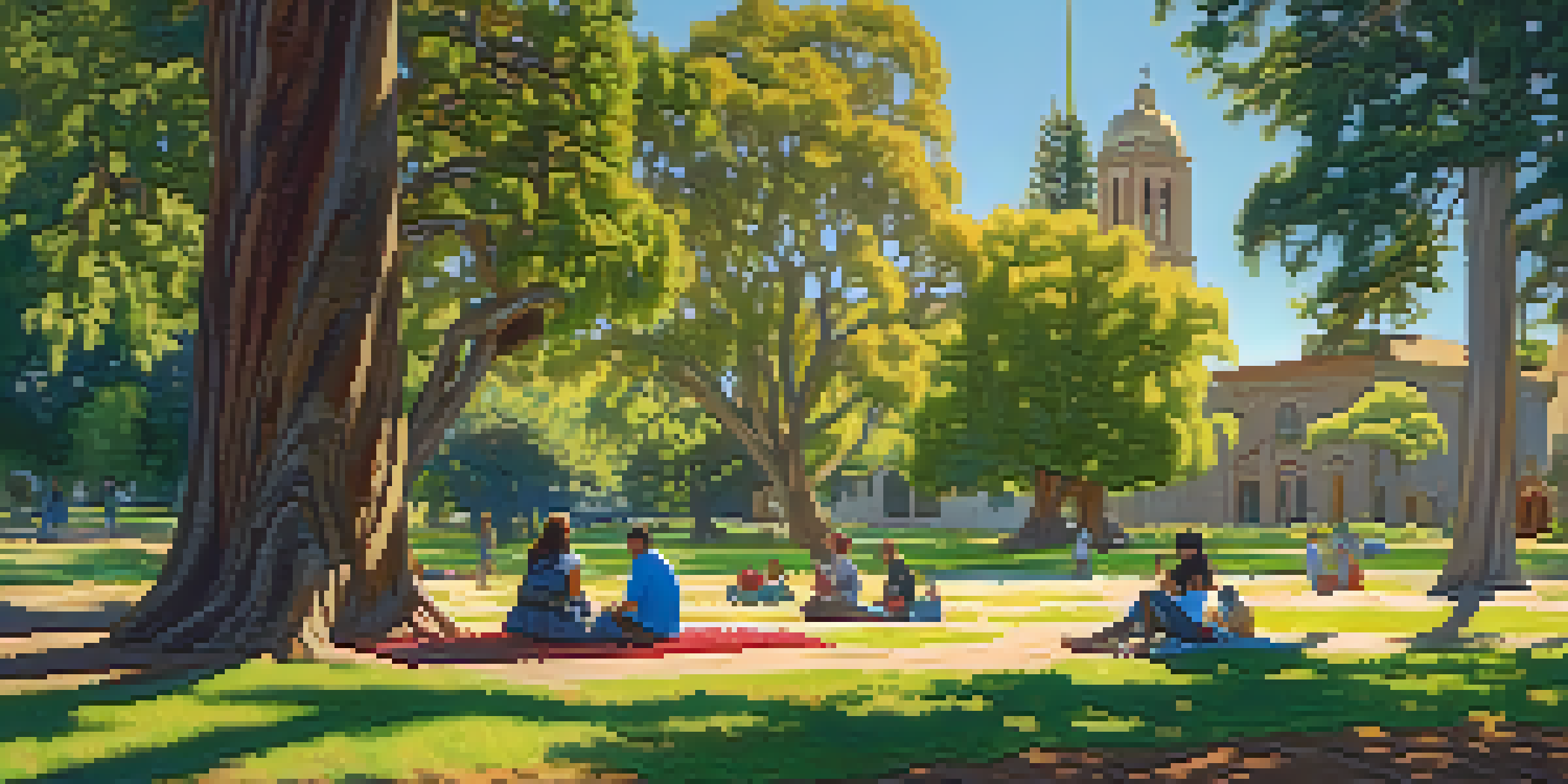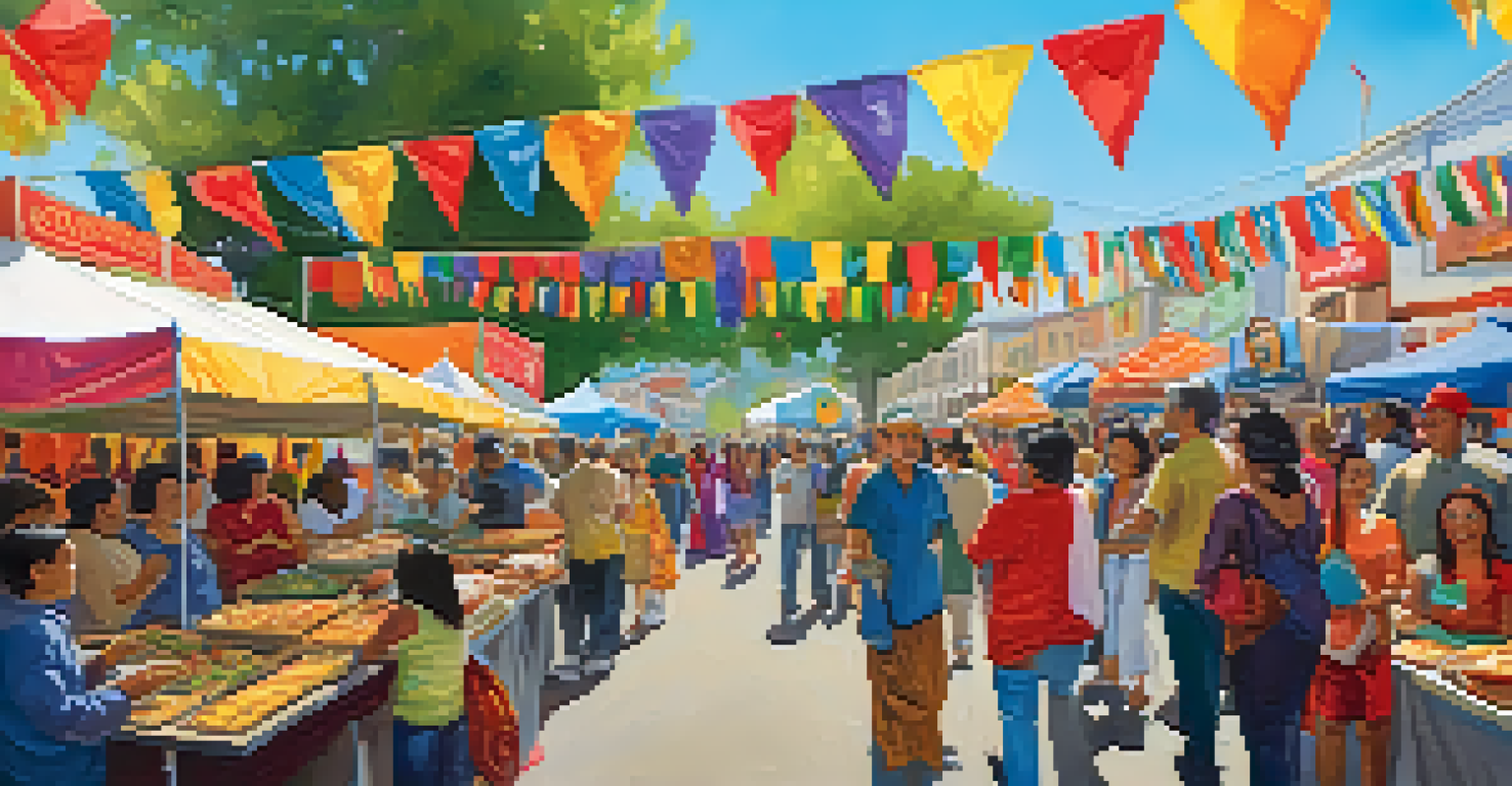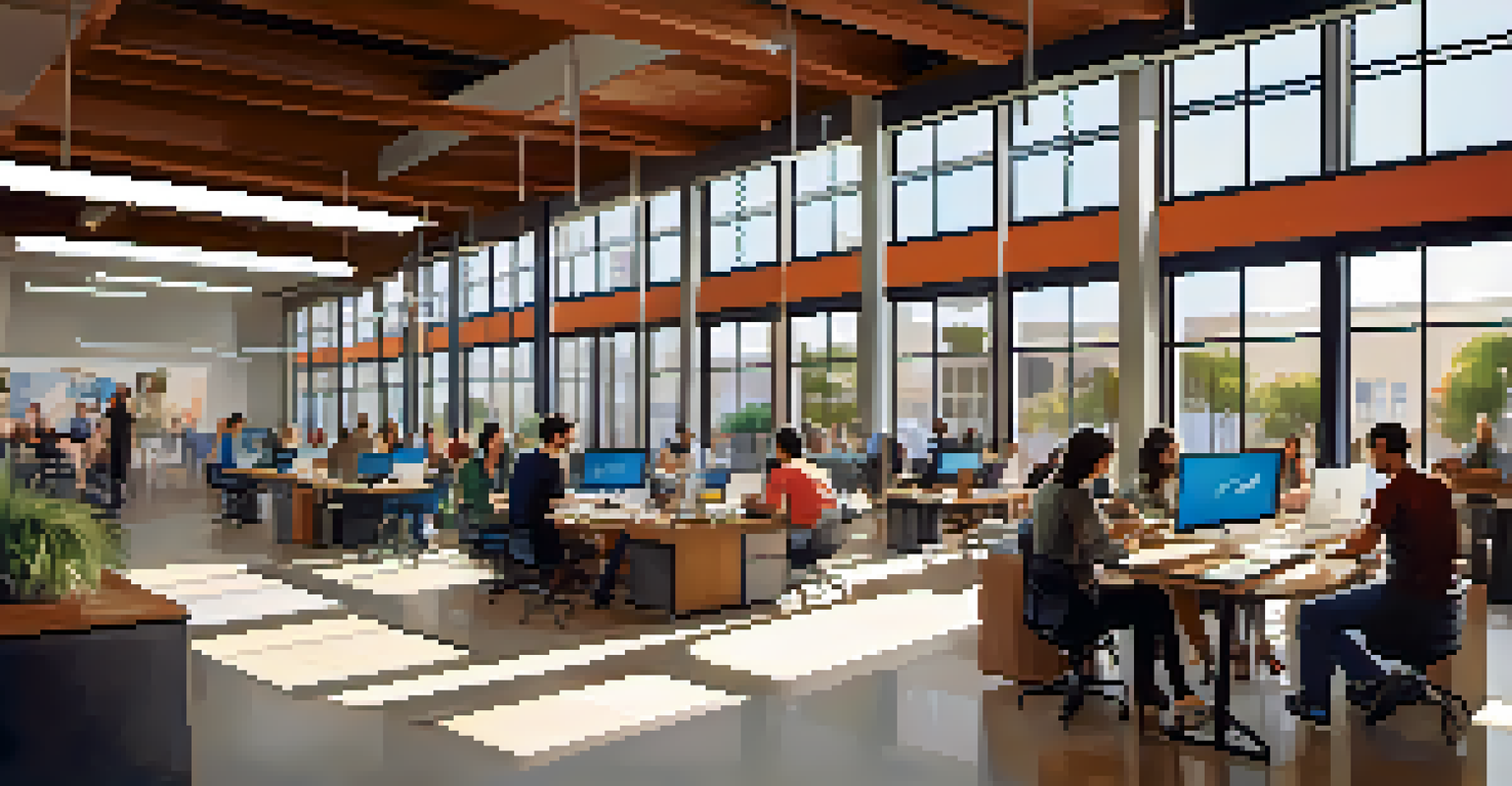Cultural Influences on Redwood City's Development

Early Indigenous Cultures and Their Impact
Before European settlers arrived, Redwood City was home to the Ohlone people. Their deep connection with the land shaped early interactions and use of resources. This respect for nature laid the groundwork for future conservation efforts in the area.
The greatness of a community is most accurately measured by the compassionate actions of its members.
The Ohlone's sustainable practices demonstrated an understanding of local ecology that is still relevant today. Their methods of hunting, gathering, and fishing influenced how early settlers approached the land. Recognizing this legacy helps us appreciate the importance of indigenous cultures in the region's history.
Even as development progressed, the influence of Ohlone culture remained evident in local traditions and community events. This blend of old and new continues to enrich Redwood City's cultural landscape, reminding residents of their roots.
Spanish Colonization and Architectural Styles
The arrival of Spanish colonizers in the 18th century introduced new architectural styles and agricultural practices. Mission-style buildings can still be seen throughout Redwood City, reflecting the Spanish influence. This blend of styles contributes to the city's unique aesthetic.

With the establishment of missions, the Spanish also brought their religious and cultural traditions. These influences shaped the social fabric of the community, leading to a diverse cultural melting pot. Over time, this blend influenced local festivals and celebrations.
Indigenous Heritage Shapes Culture
The Ohlone people's sustainable practices and respect for nature laid the foundation for Redwood City's cultural identity.
As Redwood City evolved, the architectural heritage remained a point of pride. Residents often celebrate this history through preservation efforts, ensuring that the Spanish influence is acknowledged and appreciated in modern development.
The Gold Rush and Population Growth
The California Gold Rush in the mid-19th century led to a significant influx of people into the region. Redwood City, as a strategic port, became a hub for miners and entrepreneurs. This sudden growth reshaped the city's demographics and economy.
Diversity is not about how we differ. Diversity is about embracing one another's uniqueness.
As diverse groups from around the world flocked to the area, they brought their customs, languages, and traditions. This fusion of cultures contributed to a vibrant community that thrived on exchange and innovation. The city’s identity evolved, reflecting the new influences in arts, cuisine, and daily life.
The Gold Rush era set the stage for Redwood City's future development. Its legacy of diversity continues to influence the city's character, with ongoing celebrations of cultural heritage and community involvement.
Immigration Waves and Cultural Diversity
Throughout the 20th century, Redwood City saw waves of immigration that enriched its cultural tapestry. Families from Asia, Latin America, and Europe settled in the area, each adding their unique traditions and flavors. This growing diversity has made the city a culinary haven.
Local festivals often showcase this multiculturalism, with events celebrating everything from Diwali to Lunar New Year. These celebrations foster community spirit and promote understanding among residents. The city’s vibrant arts scene also reflects this diversity, with various cultural expressions thriving.
Diversity Fuels Community Growth
Waves of immigration throughout the 20th century enriched Redwood City's cultural tapestry, making it a vibrant culinary and artistic hub.
As new generations emerge, they continue to honor their heritage while blending it with local culture. This dynamic interplay creates a unique identity for Redwood City, one that is ever-evolving and inclusive.
The Role of Technology in Cultural Exchange
In the age of technology, Redwood City has become a center for innovation, attracting tech companies and talent from around the globe. This influx has transformed the local culture, introducing new ideas and perspectives. The city's tech landscape has fostered a spirit of collaboration.
Tech events and meetups often feature diverse voices, encouraging cultural exchange among residents. This blending of cultures can be seen in co-working spaces and tech hubs, where people from various backgrounds come together to innovate. The impact of technology on culture is evident in how it shapes community interactions.
As Redwood City continues to grow as a tech hub, the challenge will be to maintain its cultural roots while embracing change. Balancing innovation with tradition will be crucial in preserving the unique identity that makes the city special.
Community Initiatives and Cultural Preservation
Local organizations play a vital role in preserving Redwood City’s diverse cultural heritage. Initiatives aimed at celebrating different backgrounds encourage residents to share their stories and traditions. This fosters a sense of belonging and highlights the value of diversity.
Art installations, cultural festivals, and workshops are just a few ways the community engages with its heritage. These programs not only educate but also strengthen the bonds between residents. By participating in these events, individuals become part of a larger narrative.
Technology Enhances Cultural Exchange
As a tech hub, Redwood City fosters innovation and collaboration while balancing the need to preserve its rich cultural roots.
As these initiatives grow, they help ensure that future generations appreciate the rich cultural history of Redwood City. This commitment to preservation reflects the community's values and its vision for an inclusive future.
Looking Ahead: A Vision for Cultural Integration
As Redwood City continues to evolve, the challenge will be to integrate its diverse cultural influences while fostering unity. The city has the potential to become a model for how communities can celebrate diversity while working towards common goals. Engaging residents in discussions about cultural representation will be essential.
Future development plans must consider the voices of various community members to ensure inclusivity. This might involve creating spaces where diverse cultures can showcase their traditions and engage with one another. By prioritizing cultural integration, Redwood City can enhance its sense of community.

Ultimately, the city’s strength lies in its diversity. By embracing this aspect and looking to the future, Redwood City can create an environment where all cultures thrive together, enriching the lives of its residents.